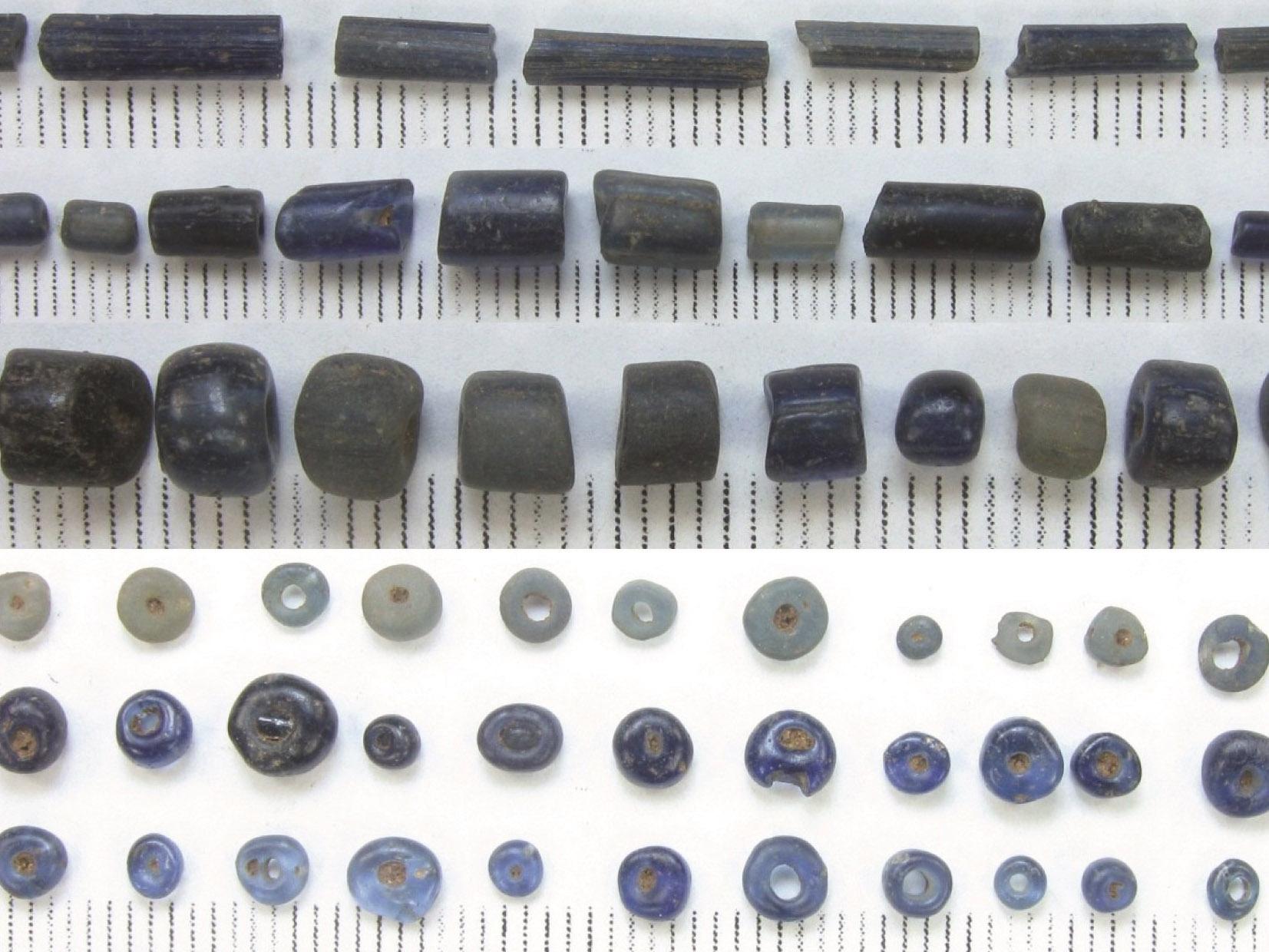Glass was made in Africa centuries before arrival of Europeans, says new evidence
Chemical analysis of beads found at a site in Nigeria revels a composition entirely unique to the region

Your support helps us to tell the story
From reproductive rights to climate change to Big Tech, The Independent is on the ground when the story is developing. Whether it's investigating the financials of Elon Musk's pro-Trump PAC or producing our latest documentary, 'The A Word', which shines a light on the American women fighting for reproductive rights, we know how important it is to parse out the facts from the messaging.
At such a critical moment in US history, we need reporters on the ground. Your donation allows us to keep sending journalists to speak to both sides of the story.
The Independent is trusted by Americans across the entire political spectrum. And unlike many other quality news outlets, we choose not to lock Americans out of our reporting and analysis with paywalls. We believe quality journalism should be available to everyone, paid for by those who can afford it.
Your support makes all the difference.Glass was produced in sub-Saharan Africa long before Europeans arrived, according to scientists studying beads found in Nigeria.
Chemical analysis of glass found at a Nigerian archaeological site revealed a distinct composition entirely unique to the region.
The finding contradicts a long-held assumption that glass was brought to sub-Saharan Africa by traders from the Mediterranean or the Middle East.
Igbo Olokun, the site where the beads were discovered, is in the north of an ancient city and regional centre of power called Ile-Ife – the ancestral home of West Africa’s Yoruba people.
“This area has been recognised as a glass-working workshop for more than a century,” said Dr Abidemi Babatunde Babalola, an anthropologist at Harvard University who led the research project.
The abundance of glass beads found in Ile-Ife has been associated with the many shrines and sculptures historically located there – however, archaeologists have presumed they were evidence of trade with distant nations.
“The glass-encrusted containers and beads that have been uncovered there were viewed for many years as evidence that imported glass was remelted and reworked,” said Dr Babalola.
There have been suggestions over the past decade from researchers that the glass production in Ile-Ife was in fact an entirely local affair, but evidence for such an industry was lacking.
Now, the beads and glass working debris found and analysed by Dr Babalola and his collaborators appear to resolve the matter.
“The Igbo Olokun excavations have provided that evidence,” Babalola said.
Of the 12,000 glass beads found at the site, the researchers analysed 52 and found none matched the composition of glass produced anywhere else.
Two groups of glass were found at Igbo Olokun, one with high levels of lime and alumina, and one with low levels of lime and high levels of alumina.
Both were identified as unique to the region, and Dr Babalola and his team noted their composition reflected the local geology and raw materials that were available.
Notably, the glass found at Igbo Olokun was also dated to between the 1100s and 1500s, centuries before Europeans established trade networks in West Africa.
“We are now confident beyond reasonable doubt that both the high lime-high alumina and low lime, high alumina groups of glass represent a glass produced in early Ile-Ife using local recipes, raw materials and technology,” wrote the researchers in their paper documenting the findings.
Their results are published in the Journal of Archaeological Science.
The occurrence of similar beads in other West African societies, as revealed by other archaeological excavations, indicated the glass produced at Igbo Olokun was part of a wider regional trading network.
Join our commenting forum
Join thought-provoking conversations, follow other Independent readers and see their replies
Comments